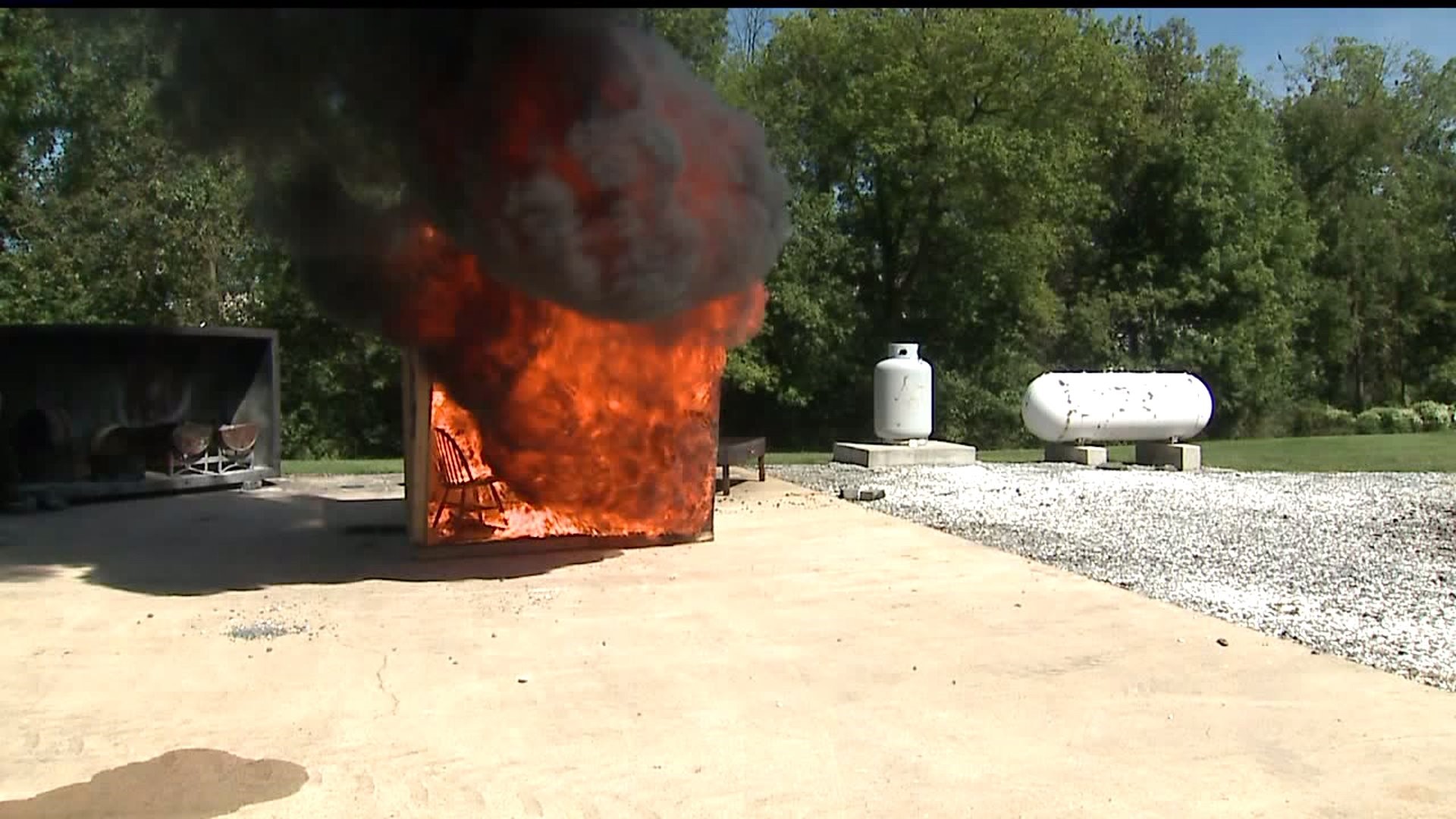YORK COUNTY, Pa. – Investigators are warning about a common culprit of house fires that we would have never suspected: aquariums. FOX43 Reveals how quickly they can start a fire in your home.
York County’s new fire investigator Detective Donnie Hopple, and a fire crew, showed FOX43 Reveals a controlled fire by simulating a power strip malfunction. They constructed a room with wall-to-wall carpeting, a comfy couch, a wooden chair, and your average high-back chair. A blanket caught fire and within a minute the couch was ablaze. FOX43 Reveals watched everything in the room go up in flames in as little as 180 seconds.
Detective Hopple is warning homeowners that aquariums are an unsuspected, yet common culprit of house fires. This year, the county has already had 3 house fires caused by aquariums as of September 2019, including a devastating loss in Conewago Township on July 20th.
“The entire home was destroyed and again that came to a power strip that had all of the aquarium accessories plugged into it as well,” said Det. Hopple.
Detective Hopple showed FOX43 Reveals how a tank full of water can be a serious fire hazard if you do not have what is known as a “drip loop.” The “drip loop” is the part of the power supply cord below the level of the wall electrical outlet. He said aquariums should never be plugged into a power strip that is lying flat on the floor.
“Where they plug into the wall, they should always have a drip loop,” explained Det. Hopple. “The drip loop basically is so that if water does come down, it can’t travel back up and it plugs into the wall. That way, if any water would get on there, it would drop onto the floor and not get into the electrical outlet.”
When water does get into the outlet, it causes corrosion, resistance, and overheating. The real life saver in a fire, said Det. Hopple, is awareness.
“I think what’s important is to understand the timeline when all that happens, because you don’t have a lot of time,” he explained. “The awareness of the drip loop and not utilizing power strips is very important.”
POWER STRIP / SURGE PROTECTOR SAFETY
According to the US National Fire Protection Association (NFPA), products that generate heat (such as hair dryers, space heaters, toasters, or crock pots) should always be plugged directly into an electrical outlet. They pull too much power to safely use with a power strip or extension cord, can cause overheating, and eventually a fire.
The NFPA said people should not use power strips outdoors, in high temperature areas, or in wet areas.
Here are some Q&A’s with Det. Hopple:
Can you plug an air conditioner into a heavy-duty extension cord? Normal extension cords cannot handle as much electricity as permanent wiring, so if people use one to plug in their air conditioning unit, the cord can overheat and start a fire.
Can you overload a surge protector? Yes. Just because a power strip has eight outlets does not mean people can or should plug in eight items. It depends on what you are plugging in. If you do not limit the number of heating products or appliances, it is pretty easy to overload a power strip or surge protector and have a circuit breaker trip.
Can you put a power strip on or under carpet? This same reasoning applies to covering your power strips or cords, typically with a carpet or rug. Another hazard of covering power strips is that the cords underneath can get stepped on, leading to frayed wires over time. Exposed wires not only pose the threat of electrocution but can also cause a house fire.
AQUARIUM SAFETY
- If any of the aquarium appliances show any signs of water leakage, immediately unplug it from the power source.
- Carefully examine the various appliances and if there is any water on the parts not intended to be wet, it should not be plugged in.
- Do no operate any of the appliances if they are malfunctioning or damaged.
- To avoid the possibility of the appliance or power source getting wet, the aquarium should be positioned to the side of a wall mounted receptacle.
- A “DRIP LOOP” should be arranged for each aquarium appliance being plugged in to a wall receptacle. The “Drip Loop” is the part of the cord below the level of the wall receptacle to prevent water from traveling along the cord and coming into contact with the receptacle.
- It is recommended that a power strip not be used in conjunction with an aquarium due to water from the aquarium traveling down the cords. If the power strip is positioned flat on the floor, water can enter the receptacle. If this occurs, it will cause corrosion. The corrosion causes resistance and resistance causes overheating. After a period of time, this process will cause increased heating and can then overheat and cause a fire.
FOX43 Reveals issues that affect you and your family to keep you informed. Do you have a tip about something that needs to be investigated? Or documents we should dig into? Send us a confidential news tip at fox43reveals@fox43.com

